Great Barrier Reef

Aurora_b
Mike and Liz Downing
Sun 4 Aug 2013 20:37
|
On the trip out to the reef on the catamaran we saw
another humpback whale, this time with a small calf. The skipper of the
catamaran got as close as he was allowed and switched off the
engines (they have strict rules here on how close a boat can get, what
angle the whale can be approached at and on switching off
engines). They were both coming to the surface to breathe,
the calf coming up quite regularly as they can't hold their
breath like the adults can. Once everyone had had a good look the
engines went on again and it was off to the dive site. Had a chat with
the skipper and he's been involved with studies of the reef and gives talks
on it, but he's also been involved in studies of whales, so we discussed the
encounters we had. He's from South Africa and apparently when watching whales
there they have different rules and boats have to leave one engine
running the whole time so the whale knows where they are. On our second
encounter we had the engine running the whole time as we didn't know the
whale was there until it surfaced and blew right beside us. He reckoned it
came up just to check us out, which it did seem to be doing. The first encounter
we were just sailing, but quite fast (for us) at 8kts and we suspect it didn't
know we were there or possibly didn't realise we were moving so fast. He
also reckoned it was the growing calves that posed more of a risk to boats,
being full of exuberance to surface, breach and play, but no experience of
what they might run in to.
The reefs we visited were in pretty good condition
and with reefs stretching for such a distance (1250 miles) it's a great
place to dive and snorkel, but only if you have the right gear and the time
to wait for the right conditions. A liveaboard dive boat would seem the
best option. The reefs are so far from the coast that going on day
trips out is very expensive. Being so far out, generally it's not
possible for a yacht to get out there and back in a day and with the
predominantly strong winds, you would have to have local knowledge, or time
to acquire it, to find safe anchorages. The cruising guides all
cover coast or island anchorages with just the odd reef anchorage
described. The time to visit here is in the winter when there are no cyclones,
but being winter, the water is not that warm to stay in for a long time, even
though it's in the tropics. The winter sea temperatures of the Caribbean and Red
Sea are much warmer.
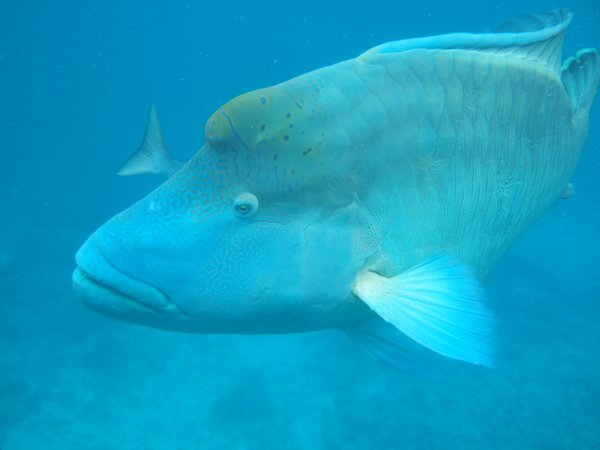 A really big fish! All the reefs here seem
to have their resident Napoleon Wrasse that
comes
to greet divers and snorkellers.
They're curious, but also after food of course. Feeding
is
generally not permitted, but some still
do.
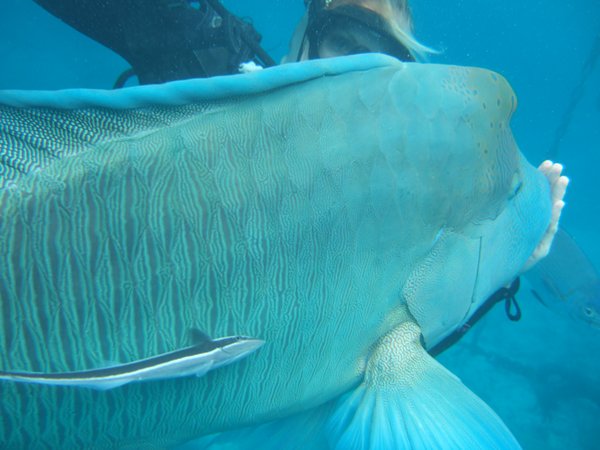 With a diver by the side this shows just how
big. (It was an empty hand over it's mouth -
there was no feeding on this
trip.)
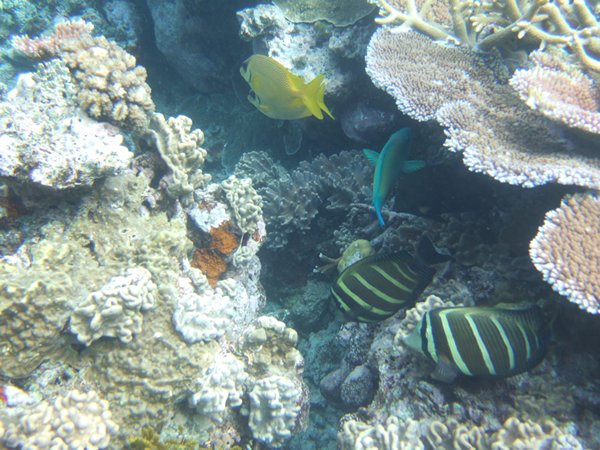 The reefs had lots of different reef
fish.
 And a few sharks - a white tip reef shark
swims beneath us.
 Plenty of anemones and a few
Nemos.
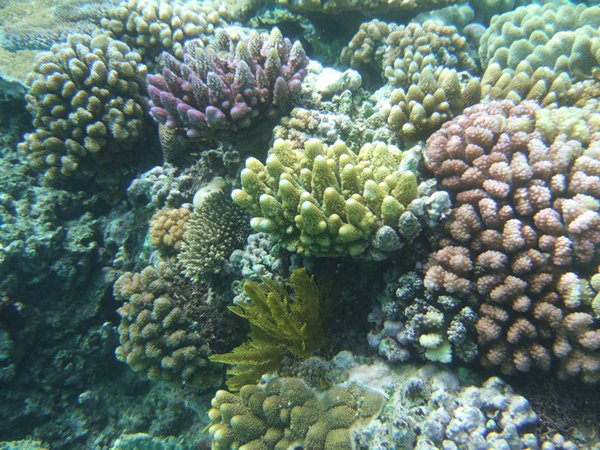 Lot of hard corals, but few soft corals
(which Fiji was so good for).
 A coral garden (above and
below).
  A different variety of Nemo (clown fish or
anemone fish).
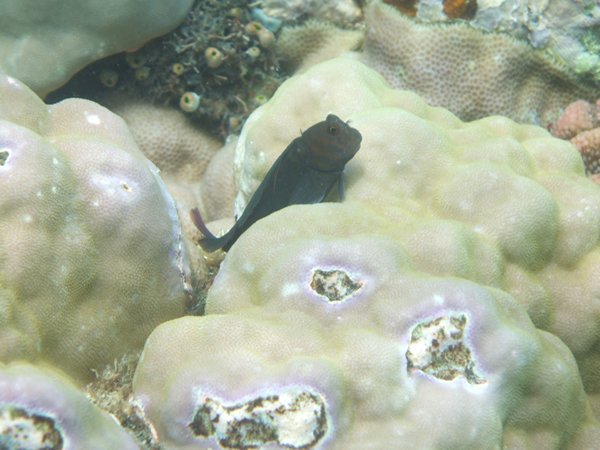 Small, but interesting, a Guppy sits in the
coral and waits.
 Lots of these Sweetlips were around and
quite big they were too.
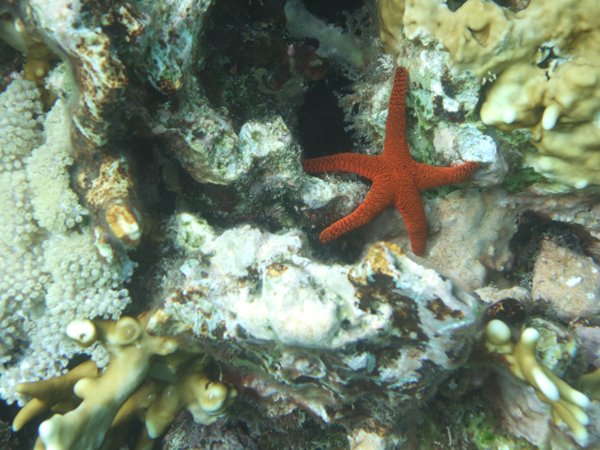 A 'lazy'
starfish.
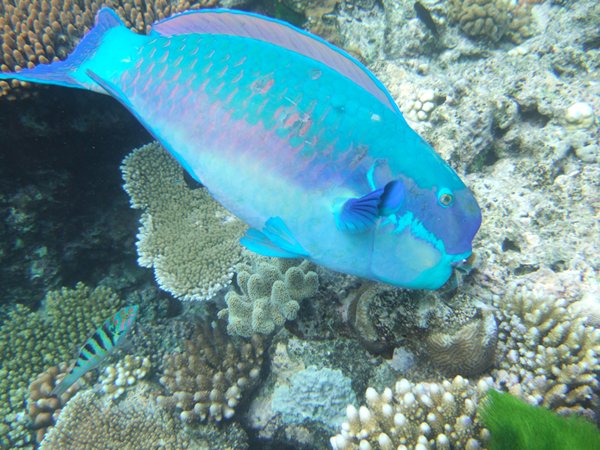 Lots of big Parrot Fish. Saw very few of
these in Fiji.
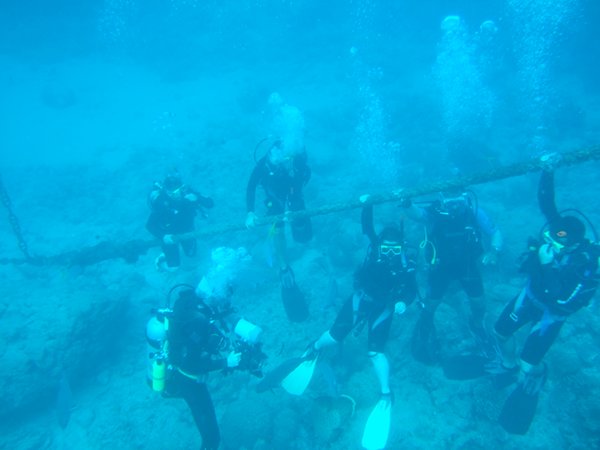 Couldn't find these in the fish book!
Trainee divers having their photos
taken.
|